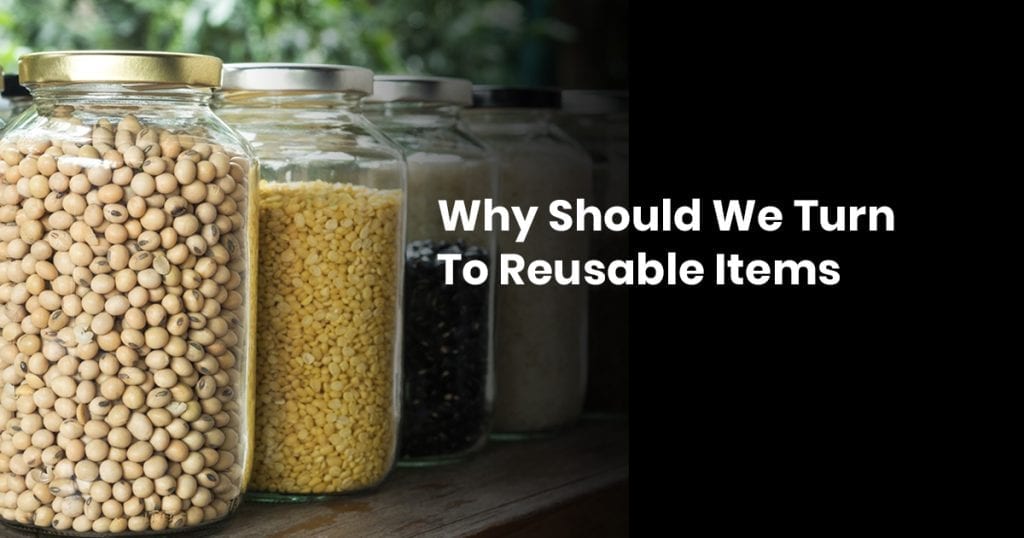Things aren’t exactly going well right now.
There are five trillion pieces of plastic in the ocean. Dead zones are expanding.
By 2040, our environmentally destructive habits will put the planet on an altered course of history that it won’t be able to turn back from.
Reusable items are one of the many ways that we can combat what’s happening.
By reusing an item, it doesn’t end up in a landfill. That’s the basis of why it’s good, but there are more factors at play to consider.
When you’re reusing something, you are using more water and detergent than you normally would be, as opposed to just tossing it in the garbage.
Reusing isn’t just about keeping the same containers and deciding that you’ve done something good for the environment; it’s about continually reducing your waste and cleaning materials so that these reusable items consistently mitigate your carbon footprint.
Reusable items do have a personal, monetary gain that’s fairly immediate.
If you were to reuse glass bottles, or switch to cloth diapers, and reusable freezer bags, just to name a few examples, you would be cutting down on the amount of non-biodegradable items that are ending up in landfills, and collectively we could reduce the emissions that are output from those factories that produce them.
Among all the horrible things that are littering our environment, plastic is the most notorious, and for good reason.
It’s basically poison that we’re hurting ourselves with, our wildlife, marine life, and the environment as a whole.
Contents
Why is Plastic Dangerous for Our Environment?
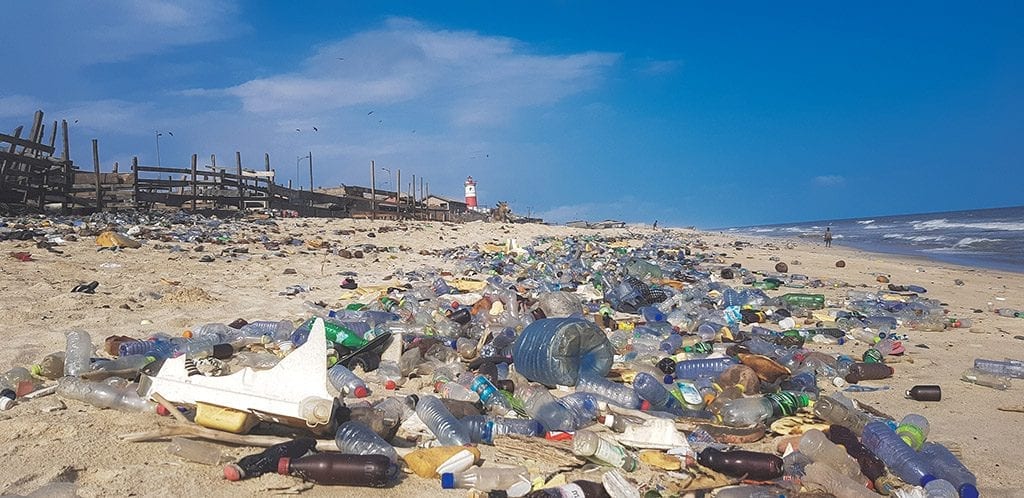
Strap in, because this one’s going to take you for a ride.
Plastic is arguably the worst pollutant that we incorporate into the environment, because it continuously damages the soil and our oceans over the course of one-hundred years.
Yes, one-hundred years. That’s how long it can take basic plastics to break down in nature, and during that time, it’s slowly leaking materials like BPA and phthalates into the environment.
To get a better scope of exactly what the damage is, let’s explore what each of the major chemicals in plastic are, and what they do.
BPA
BPA stands for bisphenol A, an industrial chemical that we’ve been using since the 60’s.
Back in 2008, there were headlines everywhere about BPA being involved with food storage bins, drink containers, and baby bottles.
You couldn’t find BPA-free baby bottles in the stores, because they were selling out like crazy for months on end. BPA studies have been few and far between, and nobody is quite sure what the adverse effects are on your body. We just live by the rule that if it’s plastic, try not to drink out of it. Getting into semantics over the additives doesn’t really help the core issue here.
Phthalates
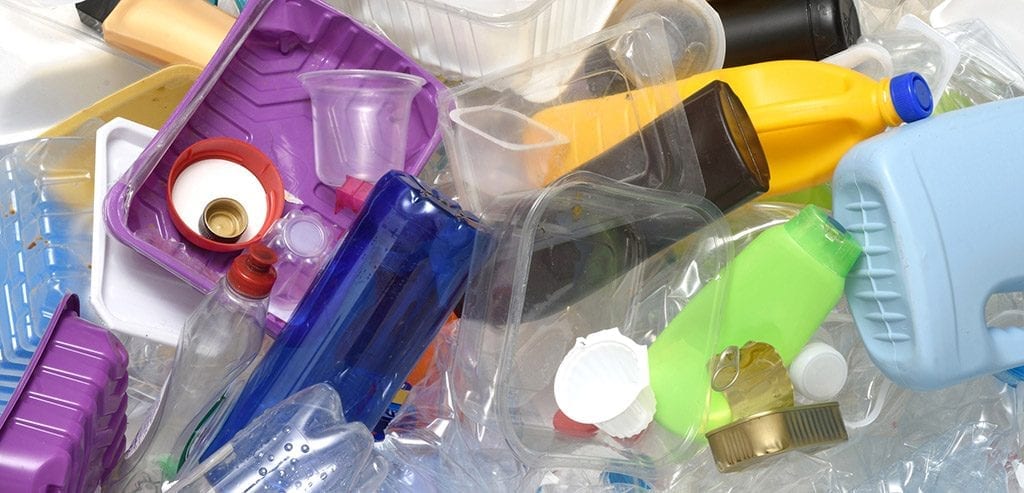
These are registered as a harmful strand of plastic, if you look at the seven stages of plastic ratings.
Phthalates are known to leak into your food.
They’re used to soften PVC plastic and other lightweight plastics, especially in cosmetic items. You are likely to have phthalates in your microbead exfoliators, which is basically rubbing small bits of poison onto your skin.
There are all-natural remedies out there that don’t have plastic beads in them that you should consider switching to.
PVC
One of the most common plastics for non-food-grade use, PVC is something you’ll commonly see on home improvement shows when they talk about piping.
PVC is a versatile and cheap plastic, because it’s made out of polyvinyl chlorine—yes, that’s right: chlorine.
Chlorine fits into a chemical category known as dioxins, which are proven to cause cancer, problems with reproductive genitalia, compromise immune systems, and even lead to less developmental advancements in young brains.
All of these combine to make what’s known as a polymer, which is when a lot of similar synthetic materials are bound together in a very tight way.
The molecular structure of plastic is most commonly referred to in the industrial world as a polymer, which is also why you’ll see plastic materials contain poly as a prefix: polyurethane, polyethylene, the list goes on and on.
Because of the molecular structure, polymers (plastics) are very difficult to break down without introducing another chemical to disassemble that structure.
The problem with that is that you’re just introducing more chemicals into the environment, and while it breaks down plastic, it also poisons the soil and waterways.
It’s not a viable solution, which is why we try to turn to reusable items and biodegradable materials.
These Plastics are Non-Biodegradable
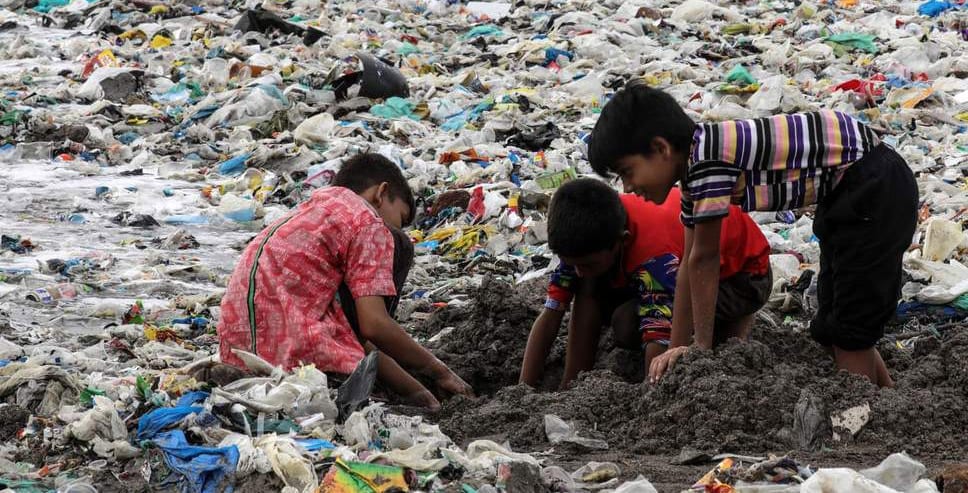
The world needs to turn to biodegradable items. By the biodegradable definition they are polymers that break down on their own over time.
This isn’t to be confused with eco-friendly materials or all-natural materials, by the way.
A biodegradable item may still hurt the environment, but at a far less rapid scale than what we’re currently doing to the earth.
Biodegradable items don’t require an introduction into nature to begin the decay process.
Where normal plastics can last for a thousand years, biodegradable goods can break down in six months, up to a decade.
While the timeline isn’t the best, it’s 1% of the worst possible timeline for most plastics, which is a step in the right direction.
Biodegradable goods have their place in our society.
If we could primarily create goods that were biodegradable, they could be stored in specific areas that promote decay, and could all break down quickly to their most basic elements.
From there, you could consider recycling the goods or at least storing the waste in a more ecologically friendly way, like what we do with (most) oil that gets recycled.
No matter what, we’re going to produce waste.
There’s nearly eight billion of us at the time of writing that post, and the numbers are exploding every single day.
Producing and storing waste can be done in a responsible way that doesn’t have an environmental impact, apart from the production of said products and creating the storage containers and methods to house them.
But that’s the thing, that’s a few things that we can manage in a more ecologically-friendly way.
That has an end to the life cycle of the packaging, building materials and other non-reusable items, and that means there’s an achievable goal.
Benefits of Reusable Items
Reusable items are one of the reasons that this site exists.
Reusable items are one of the strongest ways to fight pollution and the damage that we’re doing to this world, but it’s not just environmentally sound.
It actually hosts a ton of excellent benefits that are immediately gratifying, with no potential health risks for the user.
Cost Effects
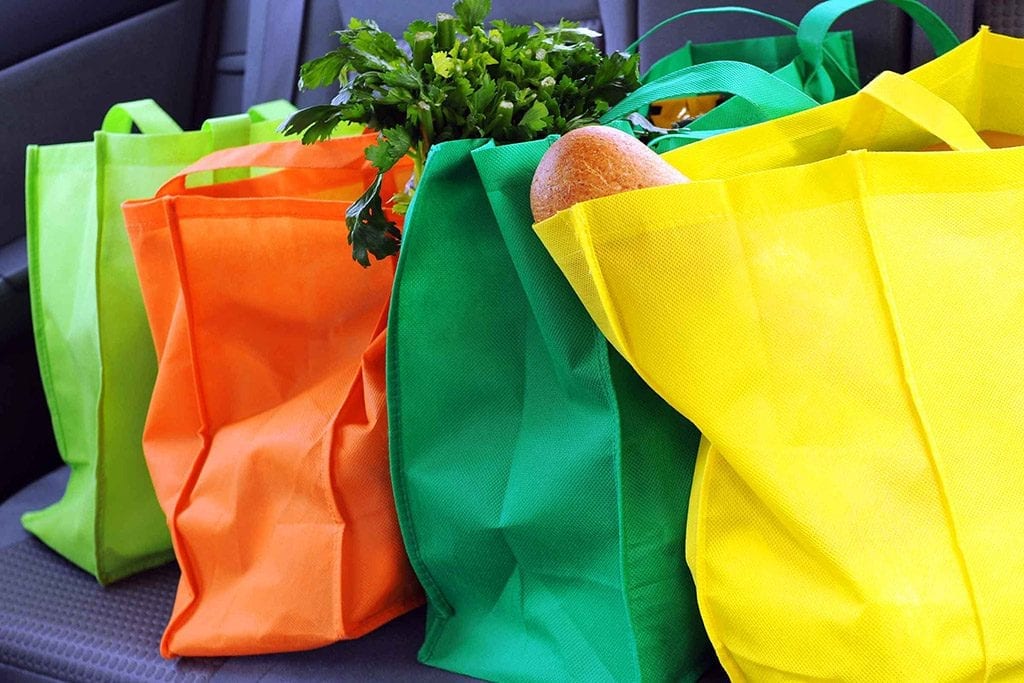
There are immediate cost benefits of reusing certain items.
Not everything is reusable, but if you were to buy a water filter for your sink faucet, some filters, and reuse glass bottles instead of water bottles, you could save hundreds of dollars per year.
If you go with cloth diapers instead of disposable ones, you’re keeping hundreds of pounds of plastic and harmful chemicals out of landfills, while also saving at least $1,000 per year, per child.
Think of what you could do right now with a thousand dollars, all for a little extra time spent doing laundry.
The point is, it’s cheaper to go reusable, but it might not appear that way at first.
Brands that rely on their single-use items try to dissuade people from reusable items by saying that it’s a more expensive upfront cost.
Well, they’re right about one thing, there is a higher upfront cost that can be about 4-5x higher than the cost of a batch of single-use alternatives.
However, you’ll have to buy those single-use alternatives
Quality Control
You are in control of the quality of the items you use.
That means you might need to make a one-time purchase of higher quality items, be it glass bottles or more durable plastics, but you are controlling the quality.
If you don’t want something, you don’t have to have it. That’s one beauty of choosing your own reusable items: you’re no longer at the mercy of whatever packaging the item comes in.
If you’re smart and reuse containers and materials that don’t give off harmful chemicals, like plastic, you can also control the quality of whatever the intended use is.
Control the flavor and quality of your beverages by storing them in glass bottles, or the quality of your food with reusable glass containers. It’s all dependent on what you want.
Safer Materials

We advocated for glass a lot in that last bit, and that’s because it’s safer to use than plastic in almost every situation.
Glass is known to have absolutely zero consequences when used as a container again and again, but over time, plastics can leach BPA and other chemicals into your beverages and food.
We stopped using glass because plastic became cheaper, once upon a time.
Based on manufacturing costs now, it would actually be cheaper to make glass, but then you need to have safer methods of transporting glass, and you can move fewer units than with thinner plastic bottles.
8 Reusable Items That You Should Start Using Right Now
1. Cloth Diapers
We could go on and on about the environmental and financial benefits of cloth diapering. Disposable diapers will be one of your highest annual expenses in the first year of your child’s life, and it wreaks havoc on landfills and our oceans.
Cloth diapering is a slightly higher upfront cost, and hundreds (potentially one or two thousand) dollars in savings over the course of your baby’s life. If you were blessed with twins, double those numbers.
Cloth diapering does take more time. If you purchase enough and plan accordingly, you can only perform washes every two to three days, and have back-ups ready just to plan for the unexpected.
There is far more tact to this, but the easy way out (disposables) is rarely the best option, no matter what you’re talking about.
2. Cotton and Cloth Grocery Bags
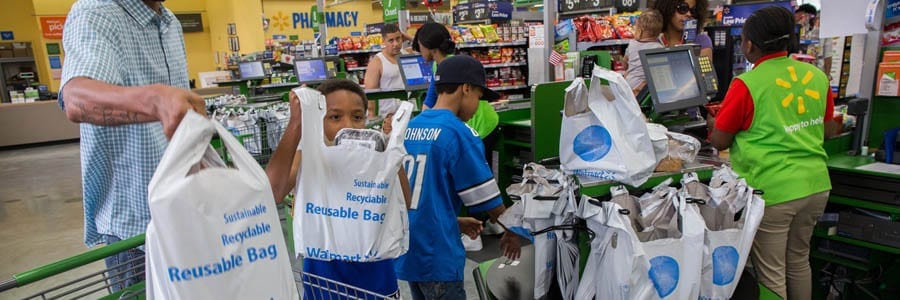
Cotton and plastic share one thing in common: they’re a polymer. The difference is, cotton is a naturally occurring polymer, and breaks down in nature in record time.
That makes cotton and canvas grocery bags fantastic for being eco-friendly, but they also give you more benefits than plastic bags.
You can carry more per bag (usually up to 44 lbs in a single bag), they’re larger than plastic bags, and you don’t have to make six trips to the car and cut off your finger circulation to carry them all back.
Environmentally, cloth and cotton grocery bags are better, but still require some fuel to be spent on production just like anything else.
It’s just important to know that when you buy reusable grocery bags, you should commit to using them as often as possible to actually cut down on your single-use plastic consumption.
For this, we recommend having one batch in the car, and another set of bags that you might bring indoors when hauling the groceries up.
3. Microfiber Cloths
These things are like magic, and can replace your paper towel and disposable cleaning rag use completely.
Microfiber rags are known to stain from time to time, but they still come out of the wash extremely soft. Microfiber takes a little longer than straight-up cotton to degrade in nature, but it is biodegradable.
You can get an average of about three years of use out of each rag, even if you’re using them on a daily basis. After a certain point, they should be disposed of for sanitary purposes.
Microfiber cloths can be swapped out for cotton cleaning rags, which have about half the life expectancy, but are cheaper and break down in nature a little bit faster.
Cotton cloths do tend to tear or wear through with age, but either way, saving an immense amount of paper towels would be the best possible thing you could do by switching to microfiber or cotton cloths.
4. Silicone Storage Bags
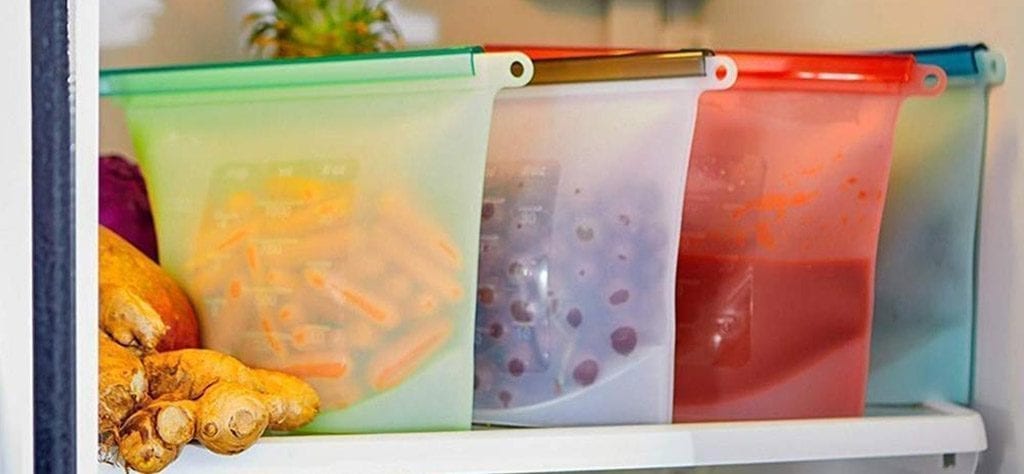
Use them for food, use them for anything you like, but just make sure that you’re staying away from single-use plastic bags in general.
Silicone and PEVA freezer storage bags are the optimal way to store food when tupperware just doesn’t cut it, and you have certain things that can’t go into glass jars for whatever reason.
Due to the natural water resistance of both of those materials, these bags are super easy to clean regardless of what was inside of them.
That’s a minimum amount of water waste, all while having something that’s completely food-safe to store food in. Silicone is used
5. Motor Oil
Motor oil is widely useful, but it’s also extremely toxic for the environment.
You can recycle it, but then it’s basically going to be stored in cans forever or filtered and reused, and you could be the one reaping the benefits of it instead.
Used engine oil recycling isn’t very common, so people have had to get creative.
Whether you filter the oil or not, you can use it for a bunch of DIY projects like:
- Finishing a floor
- Protecting the integrity of your tools
- Staining a fence
- Lubricating hinges
- Soften new leather work boots (and other uses in our guide here)
So long as you store your oil correctly, using it shouldn’t be a problem. You can reuse oil, preferably after it’s been filtered, for a very long time throughout multiple applications.
6. Can Liners
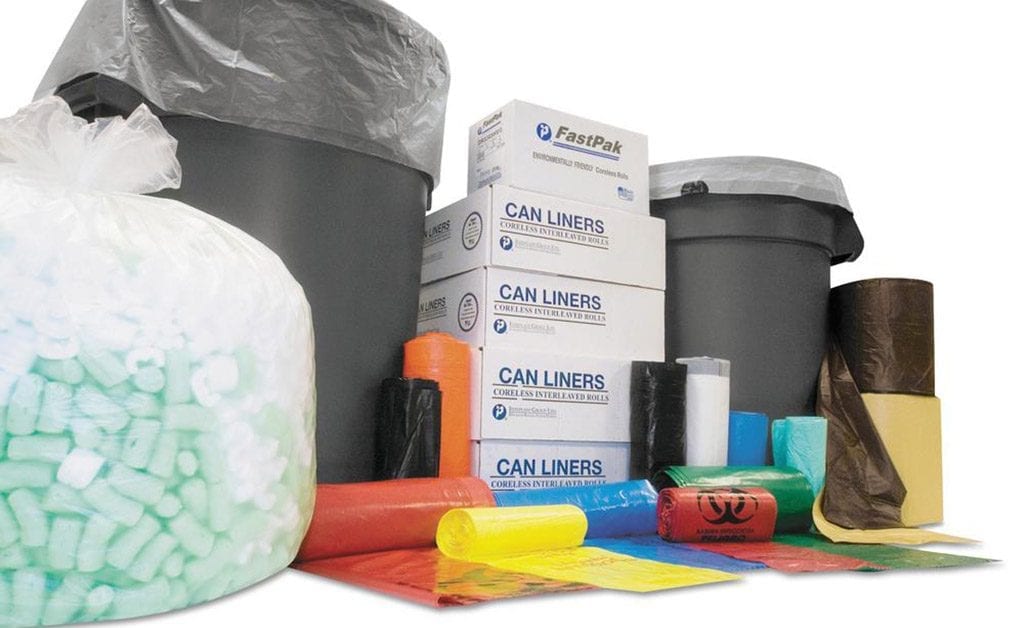
Nobody is saying that you ha.ve to have an unsanitary kitchen, but if you’re using your trash can liners effectively, you can reuse them multiple times before you run into issues.
Rinse the trash can liner with a little bit of water, and then pour it into the trash bin alongside the trash. This quick rinse should prevent most food waste from sticking to it, which will prevent bacterial growth.
There are reusable trash can liners that are meant to be washed repeatedly, and the liners can be used for years.
However, this isn’t something that every eco-friendly person is hyped about, and that’s understandable.
You can still use a disposable liner two or three times before discarding it, effectively reducing your trash bag waste by about 67%.
That may not seem like much in the grand scheme, but how often do you purchase trash bags? Often enough for it to matter.
Reusable trash can liners are an excellent thing though, and can further your environmentally conscious efforts. Once you remove all forms of waste, most of them are machine washable, so you don’t have to get your hands too dirty.
7. Glass Bottles and Jars
Glass has virtually infinite uses.
Glass is superior to plastic for storing food and beverages, because it has absolutely no leaching properties whatsoever.
There’s nothing that’s slowly going to degrade from glass and get into your drink, or contaminate food despite how long you store it in there.
Reusing glass bottles from alcoholic beverages or soda is a great way to reduce your carbon footprint, and earn some permanent drinking glasses.
They aren’t as durable or bump-resistant as drinking glasses that you buy at the store, but they still get the job done, and can last for decades with proper care.
The biggest thing to keep in mind is that you need to sanitize these glass bottles very carefully. It’s difficult to clean a narrow neck bottle when you don’t have the necessary tools, but there are other ways to clean and sanitize them effectively.
Using glass keeps it out of landfills and oceans, which is obviously a major up for the environment, but it’s also an enormous financial benefit if you stick with it.
Replacing water bottles can save you hundreds of dollars per year, and if you have a large family, the savings only grow as the kids get older and consume more.
8. Plastic Bottles
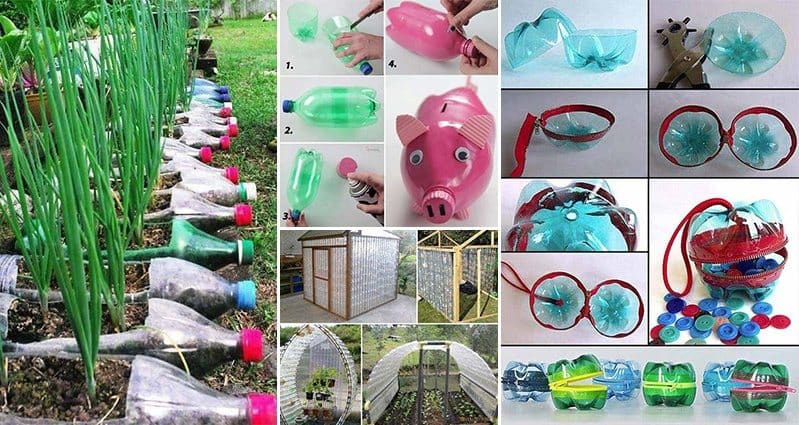
At the end of the line, you probably weren’t expecting us to tell you to reuse plastic bottles, but it’s actually one of the most eco-friendly things you can do with them.
There are a ton of ideas that you can put into practice. You can turn plastic water bottles into:
- Plastic greenhouses for growing plants
- Vertical gardens by hanging water bottles on fences
- Planter pots out of bottle bases
- First-aid kits for emergencies
- Bird feeders
- Make-do piggy banks
- Irrigation systems
And that’s just naming a few.
Reusable plastic bottles made the bottom of this list because, if you notice, we did not deem them safe for reuse with food or personal care products.
That’s because at the end of the day, there are still chemicals in each of the seven different plastic types that can leach into your food.
These ideas and others that you will find are the perfect way to keep plastic out of the landfills and oceans, and put them to good use inside of your home.
You can use plastic water bottles to do refills at work, just don’t do it more than a few times.
Water bottles are lightweight and convenient, but those chemicals can get into your water in ways you couldn’t imagine.
If your bottle of water was sitting in the cup holder in your car on a hot day, the high heat could leach chemicals.
If you freeze those bottles, you can still end up with chemicals in your water.
What Will Happen with Our Planet if we Continue to Use Non-Reusable Items
It’s not looking good.
There is still some time to turn things around, but we are doing a lot of damage to the environment at an accelerated rate.
Every single day, there are more of us, and there are already about to be eight billion people on this planet.
The crisis is containable, and approachable, but if we don’t take action against the impending disaster, this is what could happen.
Dead zones in the ocean could ruin not only get bigger, but actually crop up in more areas all over the world.
A dead zone leaves a large patch of water that contains little to no oxygen, disallowing marine life from even traveling through it without the risk of death. It’s a very serious issue that isn’t just on the horizon, it’s already begun affecting us.
It changes the biodiversity of the world, and messes with the natural order of the ocean, predators versus prey, and can even kill marine plant life.
Ironically, it can also accelerate certain plant life.
Most algae in the ocean is perfect food for fish, and is created primarily out of sunlight, so there’s relatively no drain on the ecosystem.
Fish get fed, the world keeps spinning. With massive dead zones and plastic pollution blocking sunlight from penetrating the ocean, we don’t have as much algae forming as we should have, but the production of toxic algae remains in a disproportionate number that doesn’t coincide with what nature intended.
This toxic algae can kill fish, other marine life, and hold onto toxins in the water that make it a lot harder to clear these dead zones.
Dead zones will increase until marine life is on the verge of extinction.
Currently, there are 3.7 million fishing vessels in the world, yet there are less than half as many fish as there were thirty years ago.
We’re seeing it happen right now, and as our population increases and meets a curve against food shortages, everyone is going to feel it.
Speaking of food shortages, one way that agriculture is currently being impacted, and will continue to be impacted far into the future, is the rising global climate.
Areas in the United States are seeing all-time record heats, like Los Angeles reaching 118 F, or South Carolina hitting 113 F back in 2012.
The most common attempt at defaming this information is when people look at the highest recorded temperatures in history, and cite pre-21st century dates, like the 1994 all-time high in Arizona, where it reached 134 F.
The problem is the rising average heat, and a few simple statistics from a Google search aren’t enough to combat that fact.
Higher average temperatures are bad for wildlife, agriculture, and us humans.
By the year 2050, it’s expected that we could see a global increase—meaning that our impact on the environment and everyone else’s combined—of about 3.3 degrees in Fahrenheit during the summer, and 2.9 degrees during the winter.
That may not sound like much, but it makes less hospitable environments for the polar ice caps, threatens to raise the sea levels, and makes a lot of things difficult for us.
Heat is a tricky thing, because it doesn’t just mean you’ll be paying more in cooling costs, but instead you’ll be seeing more natural disasters taking place across the world.
Heat waves, intense flooding, more severe coastal storms, and on the flip side, even droughts are all likely to happen at a much faster rate and in higher volume than we’re currently seeing.
Diminished and extinct wildlife, rising global temperatures, food shortages, increased rate of natural disasters—this is the direction we’re headed in.
The timeline can change depending on new data, but rarely for the better. Most scientists predict that by 2040, we will have set the earth on a distinct course that cannot be reversed.
Make a Choice, Make an Impact
Reusable items are in no way a reversal of the current damage to the environment, but it is a way to slow down what we’re doing while we find a way to help the environment.
If everyone switched to primarily using reusable items, we could immediately alleviate the influx of damage.
Start using glass bottles instead of plastic, reusable ice cubes instead of ice machines, and ditch plastic altogether unless you’re getting reusable, BPA-free bottles that won’t end up in a landfill.
In the three major R’s of being eco-friendly—reduce, recycle, and reuse—reuse is the most impactful to the environment.
If you’re reusing items, you’re reducing waste and recycling would-be trash, all in one fell swoop.

